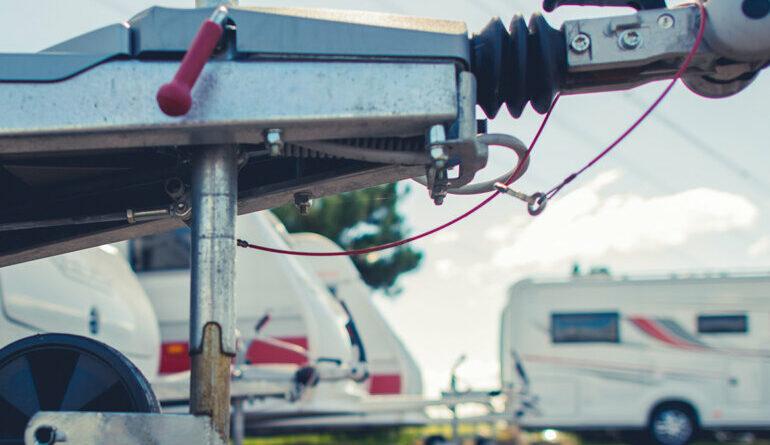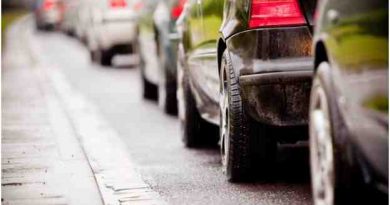Your Guide to Towing Trailers: What to Know about Your Engine Size and More
Towing a trailer might seem overwhelming at first, especially if you’ve never done it before. It’s normal to feel unsure and wonder, “Can my car handle the extra weight?” or “How do I connect the trailer securely?” Even seasoned drivers had to start somewhere.
Follow the tips in this guide to towing trailers, and with a little practice, towing a trailer can become second nature. Let’s walk you through what you need to know to get started.
Understanding Maximum Towing Capacity
Before you head out, you should know your car’s towing capacity. Pushing beyond this limit can damage your car, compromise safety, and even lead to accidents. Make sure you understand the following key terms.
Towing Capacity
Your car’s towing capacity is the maximum weight it can safely tow, including the trailer and luggage. You can find it in your car’s owner’s manual.
Gross Combined Weight Rating (GCWR)
You should also look up your car’s gross combined weight rating (GCWR). This is the combined total weight of your car and trailer that is allowed and includes all luggage and passengers.
Tongue Weight
The tongue weight is the downward force exerted by the trailer at the hitch point. Ideally, it should be 10-15% of the trailer’s total weight (including luggage) to maintain balance and control.
Safe Towing Tips
Always check your car’s owner’s manual to determine the towing capacity. You’ll want to stay below 75% of the maximum towing capacity to ease the strain on your engine and for better control.
Consider investing in tools like sway-control bars and weight-distribution hitches, especially if you have a heavier load or are planning a longer journey.
Choosing the Right Equipment
Having the right equipment is fundamental to safe towing, as each component plays a role in making sure you tow safely and securely.
Trailer Hitch
Match the hitch class to your trailer’s weight. For example, Class 1 hitches handle light loads (up to 900 kg), while Class 5 hitches can manage up to 7,700 kg.
Brake Controller
You’ll need a brake controller for a trailer with an independent braking system. It helps prevent swaying and improve overall stability.
Safety Chains
Safety chains should always be crossed under the trailer’s tongue. They act as a backup in case the hitch fails.
Tyre Pressure
Proper inflation is important for both your car and trailer tyres, especially when driving on South Africa’s varied and often challenging roads.
Hitching the Trailer
Hitching a trailer may feel tricky at first, but following this step-by-step approach simplifies the process.
1. Align the Car and Trailer
Reverse your car slowly to line up the hitch ball with the trailer’s coupler. Backup cameras or a spotter can help you do this smoothly.
2. Secure the Coupler
Lower the trailer coupler onto the hitch ball and lock it in place. Check that the latch is fully engaged and secured with a clip or latch pin for safety.
3. Attach Safety Chains
Connect the safety chains in a crisscross pattern beneath the trailer’s tongue. This will prevent the tongue from hitting the ground if the hitch disconnects.
4. Connect the Electrical Wiring
Plug the trailer’s electrical connector into your car. Be sure to test the brake lights, indicators, and hazard lights to make sure everything functions properly.
5. Perform a Final Check
Walk around your setup and double-check that all connections are secure. Pro tip: If you’re new to hitching, practice in a quiet parking lot. Take your time to get familiar with the process. A few dry runs can greatly boost your confidence.
Loading the Trailer Safely
An improperly loaded trailer can be unstable and dangerous. Follow the below guidelines when loading your trailer to maximise your safety.
Distribute Weight Evenly
Aim to place 60% of the luggage in front of the axle and 40% behind it. This balance helps prevent swaying and enhances control.
Secure the Load
Use heavy-duty straps, chains, or netting so the luggage doesn’t shift during transit. Loose items can disrupt the trailer’s balance.
Check Tongue Weight
The tongue weight should be within the recommended range (10-15% of the trailer’s total weight). Too much or too little weight can cause instability or sway.
Avoid Overloading
You never want to exceed the trailer’s maximum weight limit. Overloading puts strain on your tow car and compromises safety.
Driving With a Trailer
Towing a trailer impacts your car’s handling, so you’ll need to adjust your driving habits.
Accelerating and Braking
Gradually accelerate to avoid straining your engine, and brake gently and earlier than usual to account for the added weight. Maintain a gap of at least five seconds from the car ahead to give space for safe braking.
Cornering
Take wider turns to ensure the trailer clears curbs and other obstacles. Turning too tightly can damage the trailer or your car.
Regaining Control
If your trailer begins to sway, stay calm. Gradually ease off the accelerator and use the manual brake controller to regain control. You want to avoid sudden steering corrections.
Reversing and Parking
Reversing with a trailer can feel intimidating at first. Use your side mirrors to monitor the trailer’s movement, and remember to turn the steering wheel in the opposite direction of where you want the trailer to go.
Make small adjustments as needed and move slowly to maintain control. Practice in an open space like a parking lot to perfect your precision.
Legal Considerations for South African Drivers
South Africa has specific regulations for towing that every driver should know:
Licensing
A Code B license allows towing trailers under 750 kg, while a Code EB license is required for heavier loads.
Roadworthiness
Your trailer’s lights, brakes, and safety features need to be in working order for it to be roadworthy. Regular maintenance is non-negotiable.
Speed Limits
The maximum towing speed is generally 100 km/h unless otherwise shown.
Get Car Insurance Today
Towing a trailer involves certain risks, and having comprehensive car insurance can provide peace of mind. Whether it’s unexpected damage, an accident, or theft, having the right coverage protects you and your investment. Explore a free online quote for car insurance to find one that suits your needs today.
Stress-Free Towing
Towing a trailer doesn’t have to be intimidating. With the right preparation, equipment, and safe driving practices, you can transform it into a smooth and stress-free experience. Make sure your car insurance covers trailer-related risks – it’s a simple but necessary step in protecting yourself and your journey.

Disclaimer:
The article aims to provide South African motorists with information on what they need to know about towing trailers. However, always do your own independent research.
Get a quote for Comprehensive car insurance that offers fixed premiums*, reducing excess*, and top-tier service. T&Cs apply.
Please get professional financial advice from a certified financial advisor to ensure you select the appropriate financial services product.
Towing a Trailer Safely – "It is best to distribute 60 % of the load over the front half of the trailer (nearest to the towing vehicle)" https://t.co/t0YC5jf2ga #ArriveAlive #Trailer #Towing pic.twitter.com/lH2V8Zqx0S
– Arrive Alive (@_ArriveAlive) October 30, 2023




